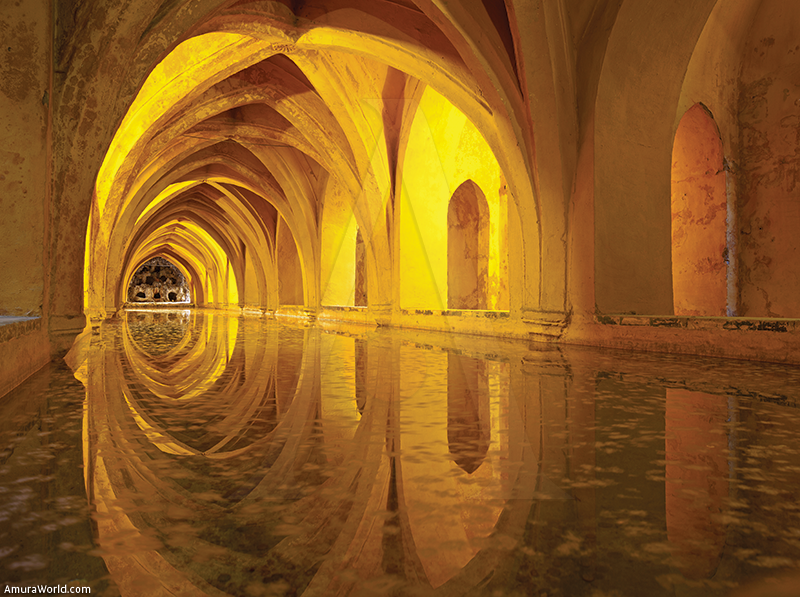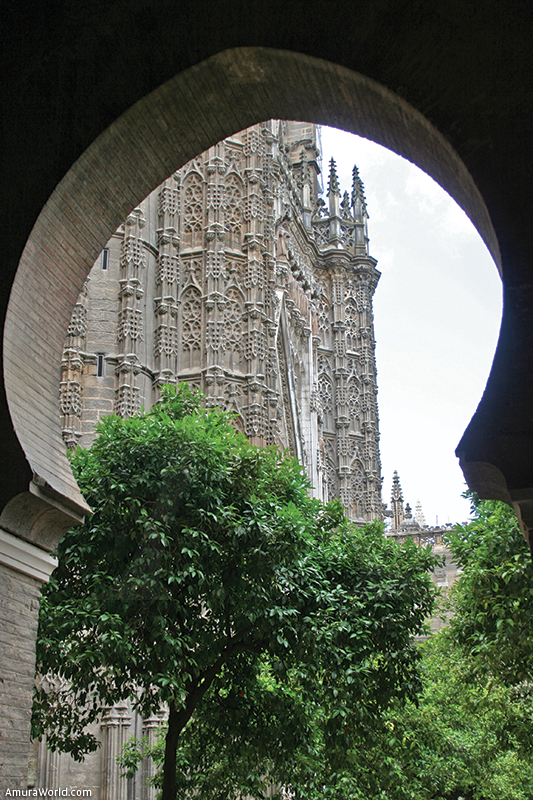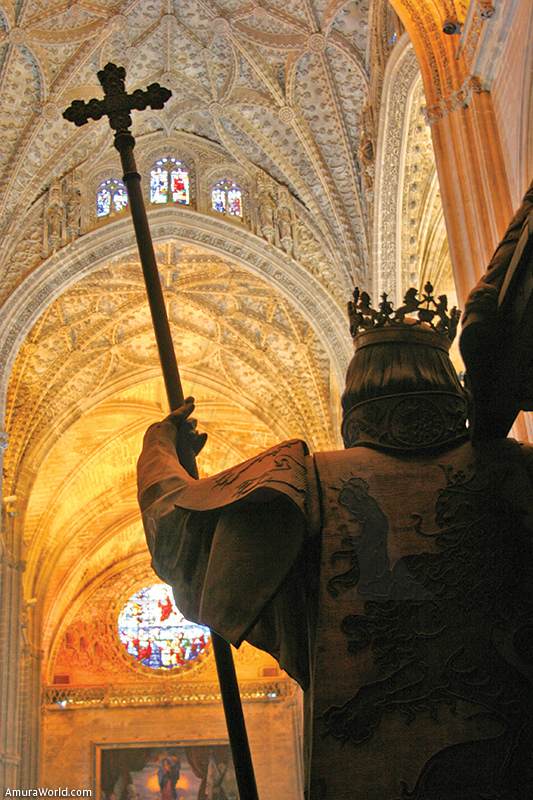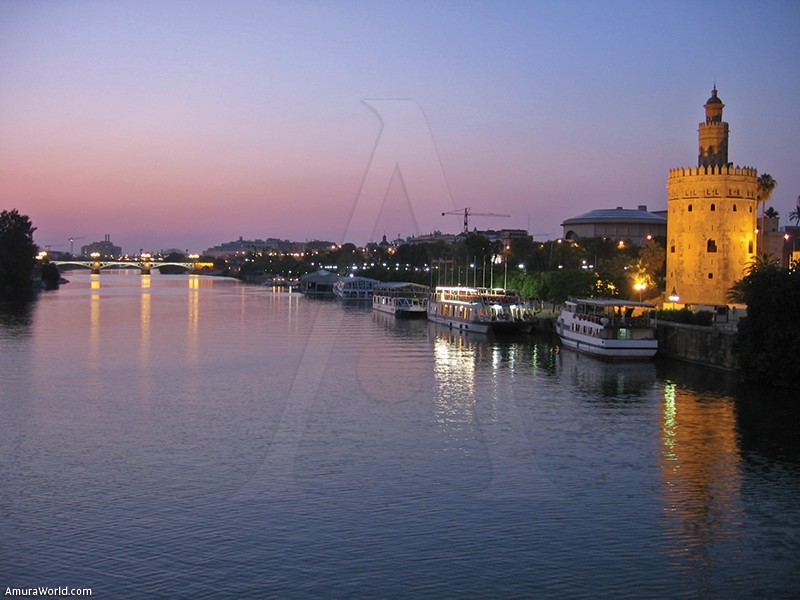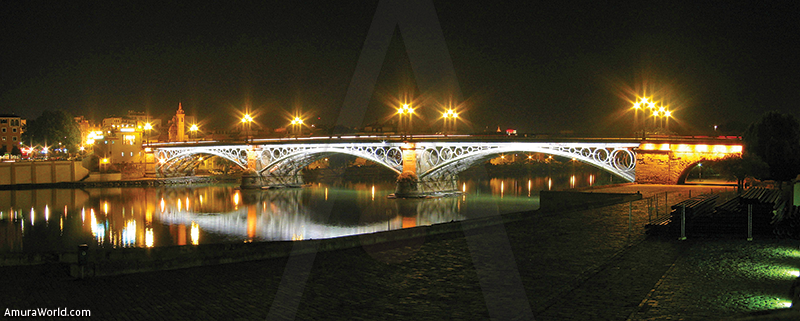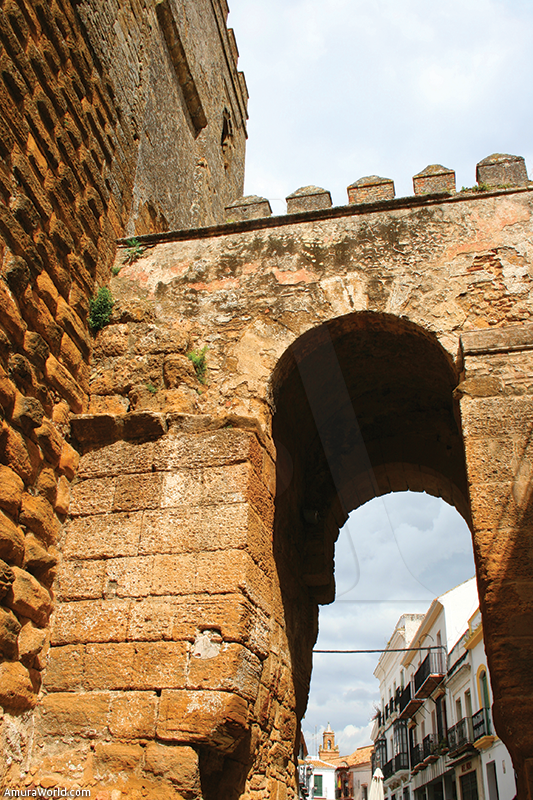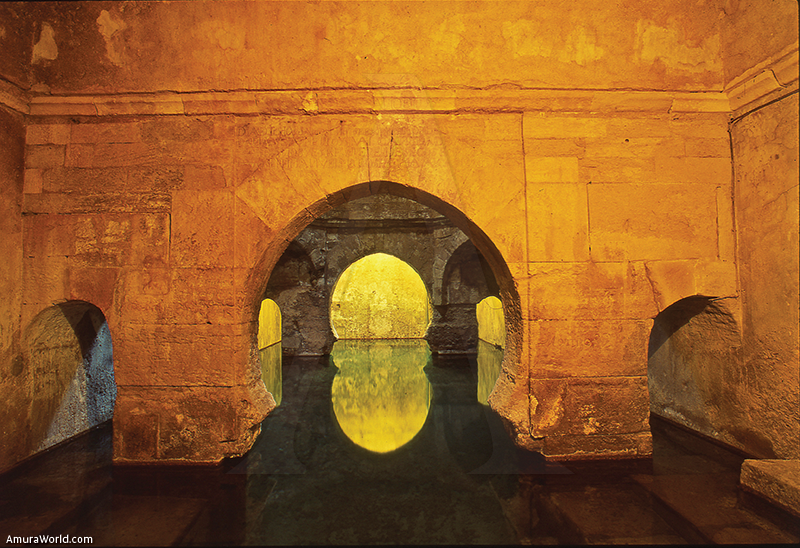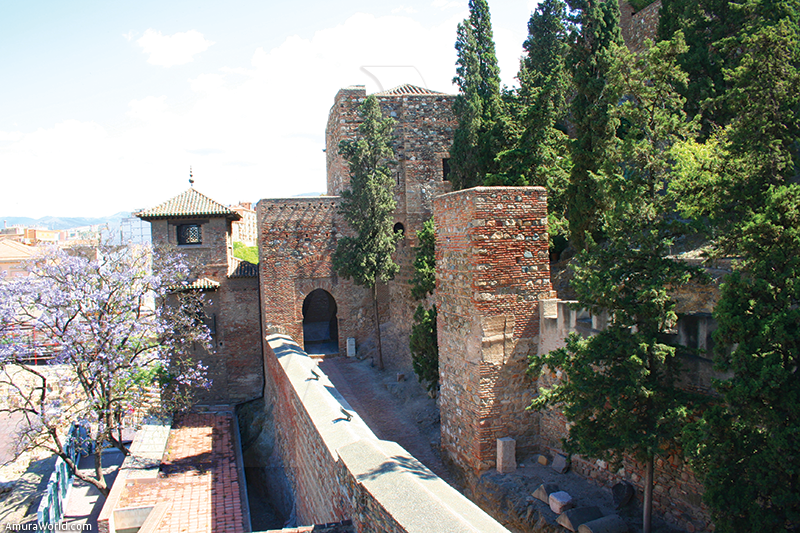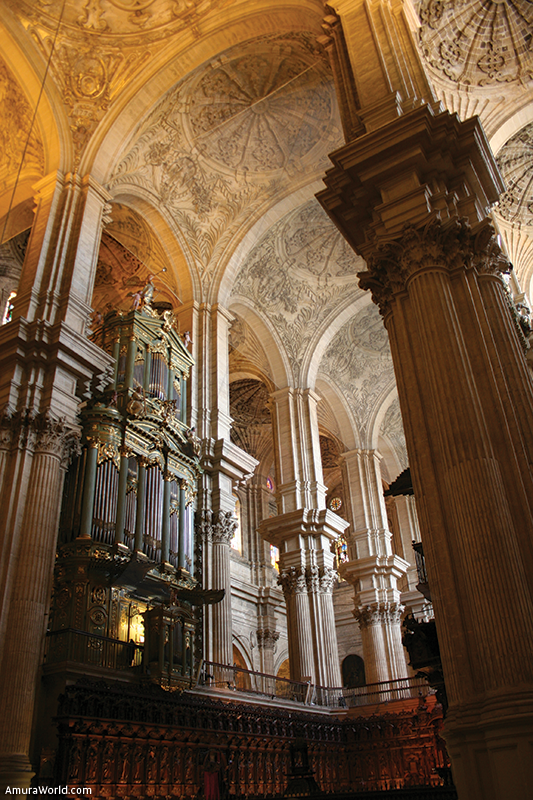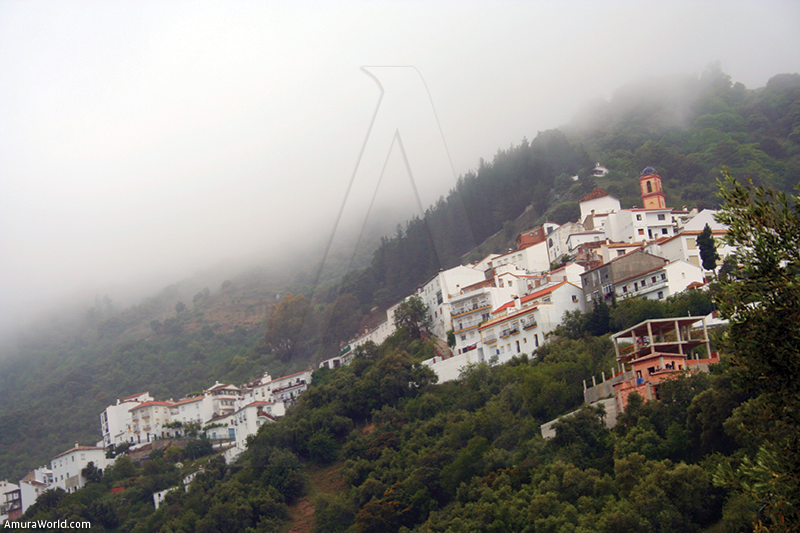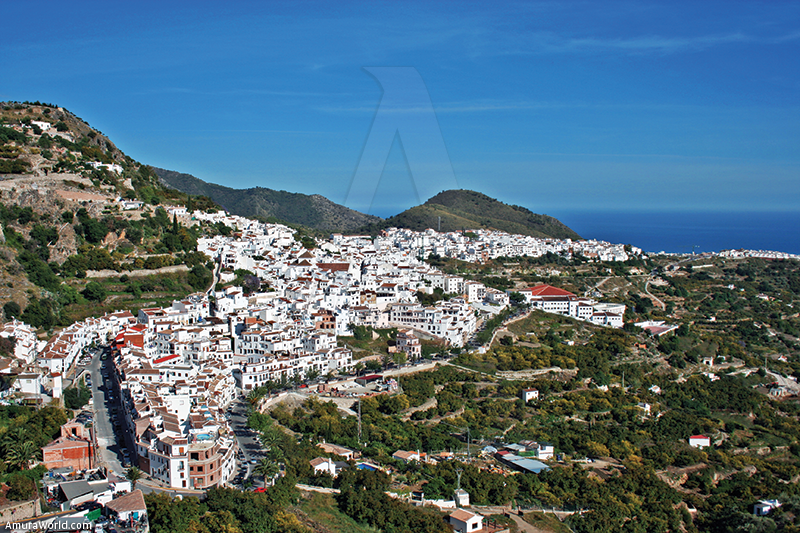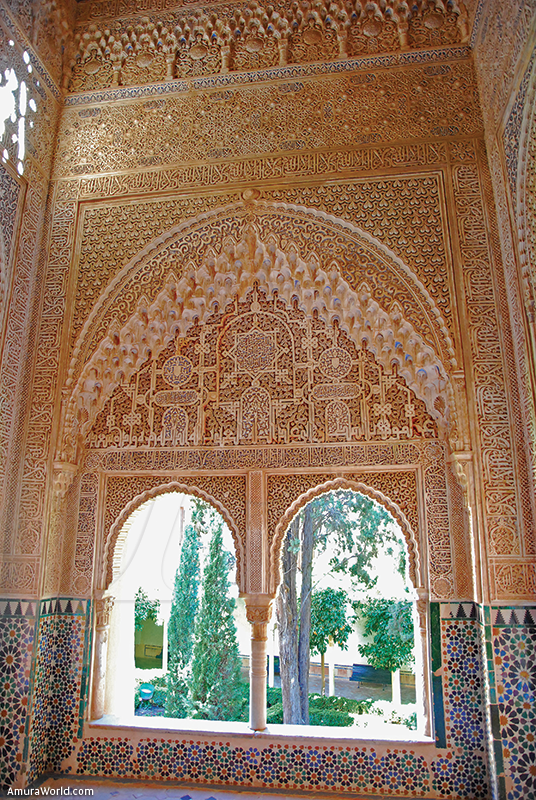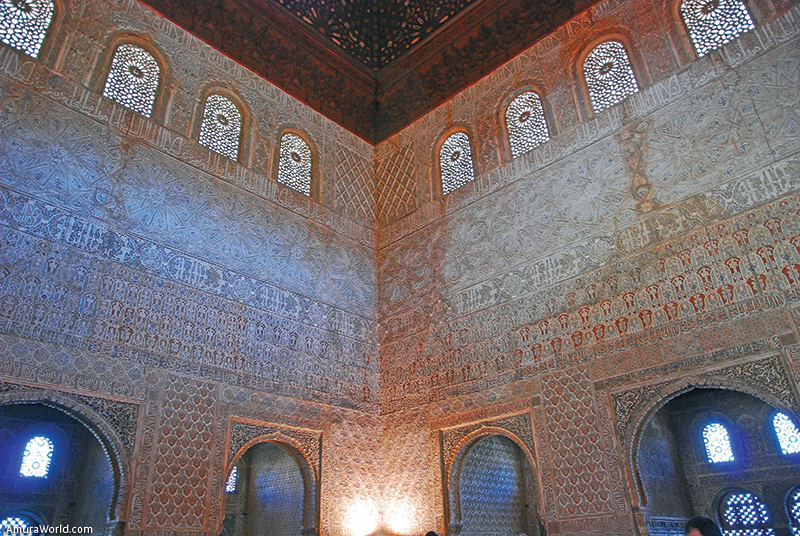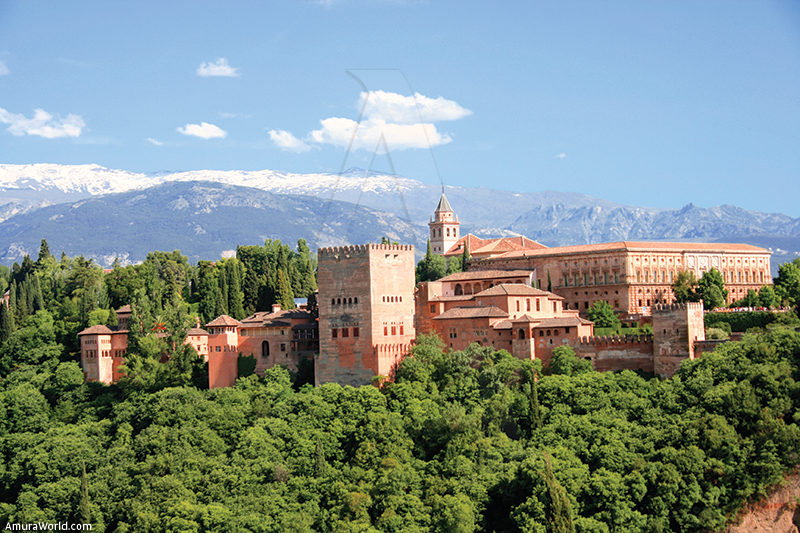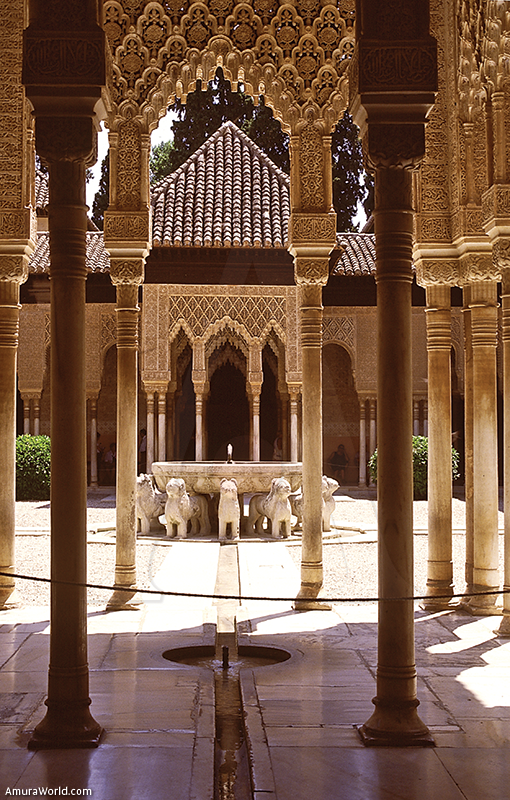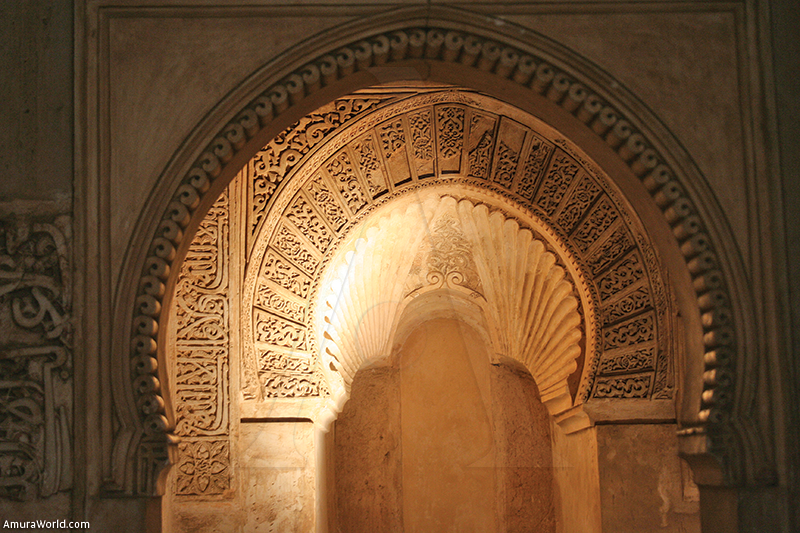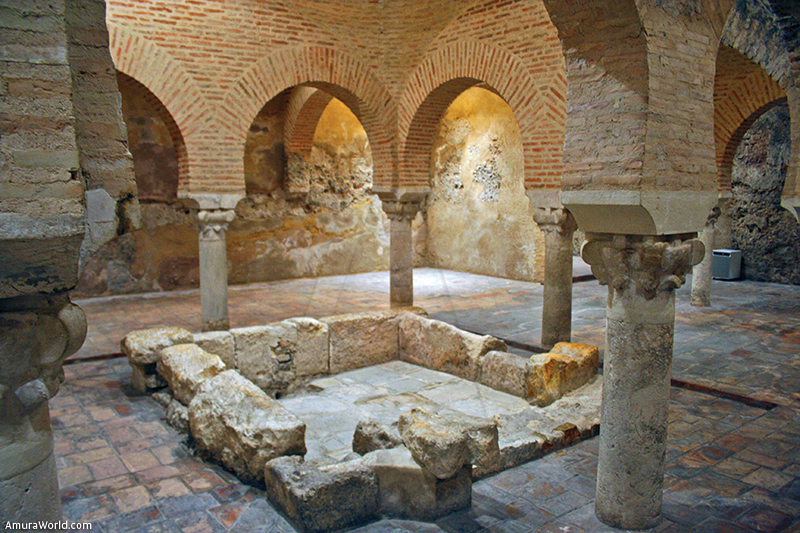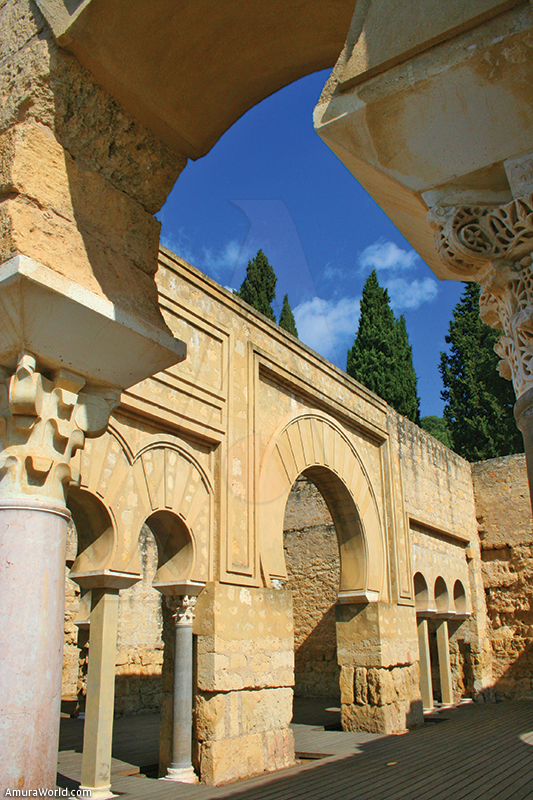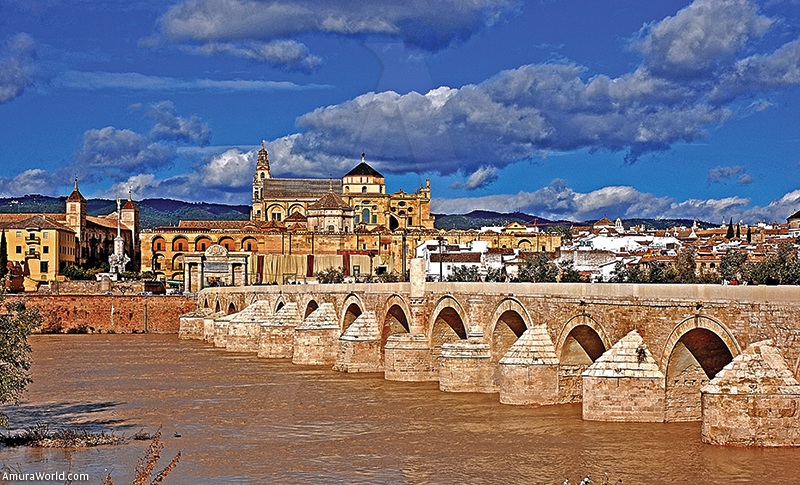The Arab legacy of Andalucia
On the paths of the land of the south, through mountains planted with towers and fortresses, rivers and seas, we discover the Andalucia of today. Emerging from the past, on the once-Arab economic and cultural power. Famous figures appear as Avicenna, Averroes, and Maimonides. We discover bright cities like Seville, Cadiz, Cordoba, Jaen and Granada. Dazzling palaces like the Alhambra, Medina Azahara, the Alcazar and the Gibralfaro of Malaga. We enjoyed a tour that takes us to discover an Andalucia beating in the essence of the remnants of the glorious past of the kingdom Al-Andalus.
Sevilla, by the shadow of the Giralda
We start this adventure with our boat moored in the small marina of the Guadalquivir River (Oued el Khbir, the great river) at the foot of the Giralda, the minaret of the great Aljama Mosque. Luxurious houses enclose well-kept courtyards and landscaped gardens. The Alcazar was a palace since 713, at the time when the Torre de Oro (Golden Tower) observed the trade arriving by sea. In ancient times, the Romans called this land Hispanis. It was rapidly Christianized and then conquered by the Suevi and the Visigoths. Conquered by the Muslims in 712, it was the capital of the Al Andalus kingdom until the throne was lost to Cordoba. Nevertheless, it remained always the cultural capital, adorned with dazzling monuments and with a thriving cultural life.
Reconquered by Ferdinand III in 1248, La Giralda was transformed by Morish influence. It was built in the twelfth century and now adorns the largest Gothic cathedral in the world. It was built in 1401 and is still proud of its famous Patio de los Naranjos, which was part of the mosque. Its architecture is unusual for a cathedral and is somehow explained by the influence of the mosques. It includes the impressive Royal Chapel where the Kings San Fernando, Alfonso X and Pedro I the Cruel lie.
The Alcazar is the Moorish fortress that became an elegant Mozarabic palace for Catholic kings who very much enjoyed their courtyards and sparkling fountains surrounded by Moorish arches and walls decorated with tiles and carved stucco. The alleys of the Barrio de Santa Cruz, the old Jewish quarter, kept the atmosphere of the so, where the Moorish atmosphere resurfaces within the Andalusian. Its courtyards dazzle with mystery and the House of Pilate catches the eye with its Moorish and Renaissance architectural mix.
Churches are a beautiful haven of peace while the bars invite us to get happy in Andalusian life, enjoying the “pata negra” ham, a gazpacho and the fried seafood. In Santa Cruz, we admired the courtyards, and spent haunted evenings enchanted by the “cante jondo” and flamenco. We admired the Plaza de España” and its baroque twentieth century architecture and just chilled out at the Parque Maria Luisa. At night, we crossed the river to go to Triana, once there, from bar to bar, from tapas to tapas, from meeting to seduction. Sevilla captures and entangles us in its alleys reviving its glorious past to the beat of a fabulous present.
Carmona: An Andalusian, Roman and Arabic treasure
Before sailing down the river toward the sea, we reached Carmona. We were attracted by the crown of white houses that tops a hill. We passed by a wall built by the Romans and modified by the Arabsthat which led us to enjoy more alleys. Tarik, the courageous Arab warrior, conquered the city in 713. The ghosts of princes of the Cordova Caliphate, continue to visit the site, deploring the surrender to Catholic King Ferdinand III in 1247. We visited the remains of the glorious past like the Palace of King Peter, dating from the thirteenth century, now, a beautiful Parador. We also admired the church of Santa Maria, of late fifteen Century Gothic style, the convent of the Holy Trinity, the Alcazar of the Puerta de Sevilla and the Puerta de Córdoba. We toured the ancient Via Augusta traced by the Romans, where the market was installed at a time when the Muslim culture was predominant. We visited the sumptuous palaces strolling the courtyards enjoying the ham, the olives and the lomo de caña . Carmona is seducing because of its candor, keeping its secrets, gets naked behind the coldness of its high walls, as if it was dancing to the rhythm of a romantic novel.
Jerez de la frontera - Wines, Flamenco and Horses
We sailed along the river toward the sea, and found on the banks of the Guadalquivir, Jerez de la Frontera. The city is watching the fertile valley where the vines brought by the Phoenicians in 1100 BC are grown. The town is filled with an aroma of wine and of the famous sherry wine. From the streets typically Andalusian, arise Arab vestiges from times when the place was a Muslim peasant village. We visited the Gonzalez Byass wineries, whose emblem in their bottle is a red hat and jacket, inhabits the city and the fields of Spain, as well as the Domecq or Estévez. We admired the cathedral, the churches and palaces, such as Domecq, the Abrantes Duke, Bertemati and Riquelme.
Horses are part of the culture. For centuries the Carthusian bred, developed and preserved the Carthusian race which produces, at the foot of the Arab fortress, the beautiful white, elegant walking horses. Jerez, according to legend, is the birthplace of flamenco. It has produced many of the greatest dancers like Jose Manuel Torre or Mercé. Flamenco has a gypsy-Moorish origin which does not hide its Muslim influence. We enjoyed the hot garlic, the oxtail stew and kidneys in sherry or cabbage. We kept sailing and reached the nature reserve, Coto Donana and the Ermita de la Virgen del Rocio. In Coto, the region’s wildlife is concentrated, especially birds. Finally, the river kindly took us to the sea into the Sanlucar de Barrameda Bay.
Cadiz, sea watchtower
We finished our sailing in the beautiful port of Cadiz. A white city that tells stories to who will listen of thousand sailors and adventures of exotic merchandises, distant battles, and our heart opens. From Tavira, one of several watch towers that top the mansions, we admired the city surrounded by its wall, protected by the sea and a lagoon. It was not hard to imagine a navigator beckoning to warn the contents in the bellies of the galleon . From those high towers, people received instructions and prepared for debarking of their goods.
The sharp white of Cadiz bursts on the blue water, the cathedral protects its inhabitants from the wind, and its gate secures its strength. The Roman Theater declares its greatness, the Falla Theater, the plazas, palaces and gardens, all in Cadiz seduces. Not to mention its cuisine; shrimp omelets, fried fish, the morena in adobo, the biensabe, the grilled mackerel, lobsters, crabs and prawns. Simplicity converted into magic back in the kitchen.
We enjoyed these original delicacies from antique Gadir, the oldest city in Europe, according to legend. Its foundations have seen pass the Phoenicians, Romans, Visigoths, Byzantines, Arabs and Christians. In the Arabs time, it was a small walled fishing port. It was conquered by Tariq ibn Ziyad in 711, in the famous battle of Guadalete. There are few monuments, the population did not give importance to these historical facts. Cadiz is a perfect lover: always cheerful, exquisite and fascinating, takes us to enjoy the nights “tapeando” through the Barrio de la Viña or the Populo.
Tarifa a coast overlooking Africa
We sailed south along the Atlantic, off the Mediterranean. The coast between Cadiz and Tarifa (the southernmost tip of Spain, Gibraltar), which gets the African winds that sweep their long sandy beaches. We arrived to the Trafagar Cape and perceived (or believed to perceive) the echoes of the famous battle of October 21, 1805, when Admiral Nelson and the British navy defeated the allied fleets of France and Spain. We reached Zahara de los Atunes and its 7 km long beach with its small secret enclaves, the new place chosen by the High-End Lifestyle of Europe. The sea is carefully guarded by hills crowned with sumptuous mansions, from which your view can reach the African coast.
Finally, we entered the Strait of Gibraltar and arrived in Tarifa, a town at only 14 km from the African continent. This is the point where the waters of the Mediterranean and the Atlantic meet. Proud of its Phoenician, Roman and Visigoth past, Tarifa intrigues by its imposing and effective wall that protected the city during Arab internal conflicts, and by its alleys with a flavor of the Al Andalus kingdom. The white houses are close to the Moroccan mountains and its winds make Tarifa the surfing capital of Spain. We can instigate the memories of this past steeped in the stones of the buttresses and bastions of this city created by the Arabs, where life was a dream and where a small cut of rich Muslim traders were installed. Since its beginnings, this city has always been a mystical place, and its environment is one of the most Arab influenced in Spain.
White Mountains villages, patches of light
We visited the English Rock of Gibraltar and were surprised by this mixture of cultures, where the cold English blood hits the Andalusian fever. On top of the rock live some monkeys that are the emblem of the city. Its name comes from Tariq, one of the first generals to cross the Strait in 711 and named the place with the name “Jebel Tariq” or Mountain of Tariq. Over the time the name degenerated into Gibraltar. We anchored in Algeciras and discovered Arcos de la Frontera, Vejer de la Frontera and Medina Sidonia, white houses crowning some hills and anticipate beautiful mountain villages like Casares, Jimena de la Frontera, Gaucin, Benarrabá and Grazalema, where the alleys cobbled always lead to the remains of the Arab fortress.
They were the typical villages of the first Arab settlers and the last to be reconquered by the Catholic kings. The tour ends in Ronda, the most beautiful city surrounded by cliffs, and adorned with palaces. Its cathedral was a mosque, the churches and the bullring, considered one of the oldest in Spain. At the bottom of the cliff we discovered a bridge built by the Arabs, which is still standing.
We embarked again in Algeciras to sail by the coast and enjoy Estepona and Marbella, both retain their Arabic flavor. We anchored in the marina of Puerto Banus, the most exclusive of the Costa del Sol, and walked through the white alleys of Marbella and bazar flavor, admiring the modified remains of the citadel. On the way to the mountains, we reached Ojén, Coin and Antequera, the latter dominated by the Arab fortress that dominates dolmens, Roman roads, ancient mosques and amazing churches. We passed by Torremolinos, former jet-set mecca in the 70s, and finally arrived at Malaga, the queen of the Costa del Sol
Malaga seductive under the Gibralfaro
The air smells likes the sea, the alleys smell like an Andalusian medina. The superb Gothic cathedral tastes like a great mesquite of immense arches. Malaga intrigues and engages with its maze of alleys. We visited the Picasso Museum, the St. James Church where the Malaga genius was baptized, and we were intoxicated to the rhythm of delicious tapas served on the cloud night of flamenco.
From the top of the Gibralfaro castle built by Yusuf I in the fourteenth century, we feel the presence of the Moors events of the past, of the Arabic words that rang on their ramparts. We admired the city from the top of the fort and we could appreciate that, where the cathedral stands, once a huge mosque reigned with its minaret. Going down the Gibralfaro we entered the Alcazaba, the fortified palace from the Nasrid era, whose Moorish arches look out towards the blue sea and the gardens of the Puerta Obscura (dark door) flooded with an orange blossom aroma. We crossed the Roman theater and the Alameda, visited the palaces and wander through the city that welcomed us as if we were the last Moor after the reconquista.
Granada a celebration and its Alhambra
We continued our sea route along the north coast of Andalusia, where the mountains are adorned with white villages and the coast with beautiful marinas like the Salobreña, dominated by a Moorish fortress. Finally, we arrived to Motril where we left our boat. We took the Granada highway and went through the mountains that once protected the kingdom before Al Andalus.
At the foot of the Sierra Nevada, we wandered through the narrow streets of one of the Spanish jewels, the last capital of the kingdom given by Boabdil, the last Moorish sultan, to the Catholic Kings on January 2, 1492, marking the end of the Reconquista. It still feels the Arab atmosphere in the Albaicin quarter, with amazing corners, souk flavor and noisy bars. Around the superb Renaissance cathedral with Gothic foundation built on the old mosque, you still feel as always the smells of good food. We visited the Royal Chapel and the churches. Going up the Darro River, we toured the Moorish Albaicin and its nazari environment. Then, we reached Sacromonte, the gypsy neighborhood. We went to the caves where they used to live. Now, they dance and sing flamenco, creating the dazzling nights of Granada. We were astonished at the beautiful view of the Alhambra. In a small square a gypsy played his guitar and sang flamenco while some girls drew with their arms in the air inspired figures of flamenco dancing.
Then we discovered the Alhambra, the jewel of the Andalusian heritage. It is a pearl that evokes those times when life was sweet in these gardens and the Sultans were not expecting the fury of the Christian kings. We scrutinized the elegantly decorated rooms and beautiful tile ceilings, courtyards where fountains murmur the soft song of freshness. This palace was built in 1234 and was the paradise for Boabdil, who in despair for his loss in 1492, he listened to his mother telling him “You cry like a woman for what you could not defend like a man.” This phrase is still echoing in some corners of the world.
We touched with delicacy and only with the mind, the lust of those Muslim times by the sound of fountains, going through the courtyards of Mexuar or the lions. , Through the various places where light penetrates timidly. We imagine the music at the halls, the luxury of the good life, and the softness of the cushions on the floor. It is a true treasure of humanity, bequeathed by the Arabs to the Christian world. The Generalife, the rural village built from XII century, seduces with its long fountains surrounded by buildings whose arches adorn an authentic paradise dreamed by Muslims. The beauty of this hill is moving, it invites you to feel like Nasrid, king of Granada so stylish and coveted. We descended stunned by so much beauty, deepened in the time when the Alhambra was ruled by Al Andalus.
Jaen, Baeza and Ubeda, mountain jewels
Continuing with our land tour, we arrived to the world’s capital of olive oil, Jaen. Jaen was reconquered in the thirteenth century. It is protected by the castle of Santa Catalina from the top of the mountain, with its imposing Renaissance cathedral which preserves the relics of the Holy Face. We were fascinated by the Arab baths with typical Moorish arches, the largest in Europe and hidden beneath a Renaissance palace. We wandered through the alleyways of the Jewish Quarter, past the wall and escaped towards the olive groves.
We arrived at Baeza, the Plateresque style pearl that was reconquered in 1227. It is decorated by a beautiful fountain of lions dating from the Roman times and surrounds the Town Hall, the old butcher, the Pópulo house and the Villalar arch which leads to the alleys of the old town. Our footsteps echoed on the stones taking us to the old university and its coats of arms, to the jabalquinto palace and its Moorish facade, to the church of Santa Cruz and the lavish sixteenth century Renaissance cathedral built on the old mosque. Baeza controls its coolness with its monumental beauty, where Muslim prayers compete in the air with the Christian choruses, echoes of the battles.
We arrived at Ubeda, romantic and epicurean, which for three centuries was a borderland, a battle zone. It was here where Jewish, Muslim and Christian cohabitated, letting its beauty to emerge by the sixteenth century. Its greatness shows at its large square Vázquez de Molina where the Sacra Capilla del Salvador arises. It is an amazing church-pantheon of the palace of Don Francisco de los Cobos. It was consecrated in 1559 and features an extraordinary entrance and a surprising renaissance luxury inside. We strolled charmed through the Palacio de las Cadenas, the Palace of Dean Ortega, and the church of Santa Maria de los Relaes Alcazar.
Cordoba, under the arches of the Great Mosque
Finally we settled in Córdoba to end our trip. Still hypnotized by a passionate flamenco show, we walked the wet alleys of old Cordoba. Squares decorated with geraniums on the balconies, a Roman bridge that crosses the Guadalquivir which testifies to its glorious past. Cordoba was the largest city in the world in the tenth century, when it was the capital of the Umayyad Caliphate of the West, until it was conquered by Fernando III El Santo in 1236 and become Christian.
The old mosque surprises by its beauty and elegance. We discovered an immense orange trees courtyard with a fountain for ablutions, its minaret defies time and went from being the guiding light of Islam to be the bell of Christianity, with its Hall of 850 Columns which support the horseshoe white and red bicolor arches, typical of the Umayyad architecture.
The beautiful mihrab with marble, stucco and mosaics, continues to indicate the direction in which Mecca is located. Impressive are the poly lobed arches of the chapel of the Villaviciosa, the vaults, the doors, the beauty of the religious ensemble. Intrigued by history, we visited the narrow alley of the flowers, a typical Moor corner, the Old Synagogue, the Alcazar of the Catholic Kings, and the Plaza del Potro. Cordoba Andalusian is savored with a rich Arab legacy aroma and an exquisite meal with the flavor of olives and ham, gazpacho and Flamenquin to end with a Cordovan cake and attend a good bullfight.
Medina al Zahara, a legacy of Abderramán III
Just 5 km from Cordoba, is Medina al Zahara. This wonderful Moor complex was built in 956 as a city palace where the court was installed. The horseshoe arches of the throne room are a reminiscent of the Great Mosque of Cordoba. It is decorated with marble reliefs attesting to its wealth. The external arches feature its great beauty, and the wall and the mosque are the witness of its greatness. It did not survive more than a century, as it was sacked in 1010 and emerged from oblivion when excavations began in 1911. It is an impressive archaeological site that allows us to meet the ghosts of the glorious Arab past of Andalusia.
We have traveled trough thousands of years in a wink. We took shortcuts by the ruins, and we were intrigued by the times when the Arabs built elegant palaces, where at their medinas lived the best doctors, the most famous mathematicians and writers and philosophers, when to its ports came great navigators, until the famous reconquest era ended the long boom. We walked the courtyards where water is the music, admired the halls covered with tiles and verses of the Koran. We touched the gardens with a look of desire and pleasure, we strolled through the streets and the neighborhoods full of echoes of history or stroking the walls roughened by so many battles. Those are the highlights of the Andalucia of today with a flavor from the realm of Al Andalus.
Text: Patrick Monney ± Photo: ©Dreamstime / Promperú / Patrick Monney

